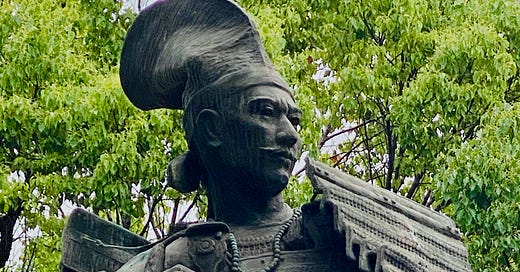The Battle of Okehazama was fought between the estimated 2,500 troops of Oda Nobunaga and 25,000 invading samurai under Imagawa Yoshimoto -- a ratio of at least 10 to 1-- (although recently historians have upped those figures to as high as 45,000 Vs 3,000) with victory claimed by Oda Nobunaga!
While at his Kiyosu Castle on the afternoon of June 11, Nobunaga had received intelligence reports from his vassals, Sakuma Daigaku and Oda Genba that the Imagawa forces, led by Imagawa Yoshimoto, had entered Oda territories.
Imagawa Yoshimoto, (1519-1560) a powerful warlord, based in what is now Shizuoka Prefecture, had become daring enough to make an attempt on the capital, Kyoto. To do so required steamrolling across the provinces, one of which was held by the Oda clan under the rule of its violent and charismatic leader, Oda Nobunaga. Imagawa took the vitally important Tokaido main artery route, entering Nobunaga’s territory early June 1560, with an army claimed to be around 40,000, but estimated to have been about 25,000 and camped just outside of modern day Nagoya at Kutsukake Castle in the Toyoake districts. Intelligence indicated that the Imagawa would probably attack the Oda held fortresses of Washizu and Marune, now just seven kilometers away, by morning. Both fortresses had been constructed to contain the Imagawa troops who had already taken nearby Odaka Castle nearly a year earlier and were using it as a forward base, providing the footing enabling them to potentially conquer Nobunaga’s lands.
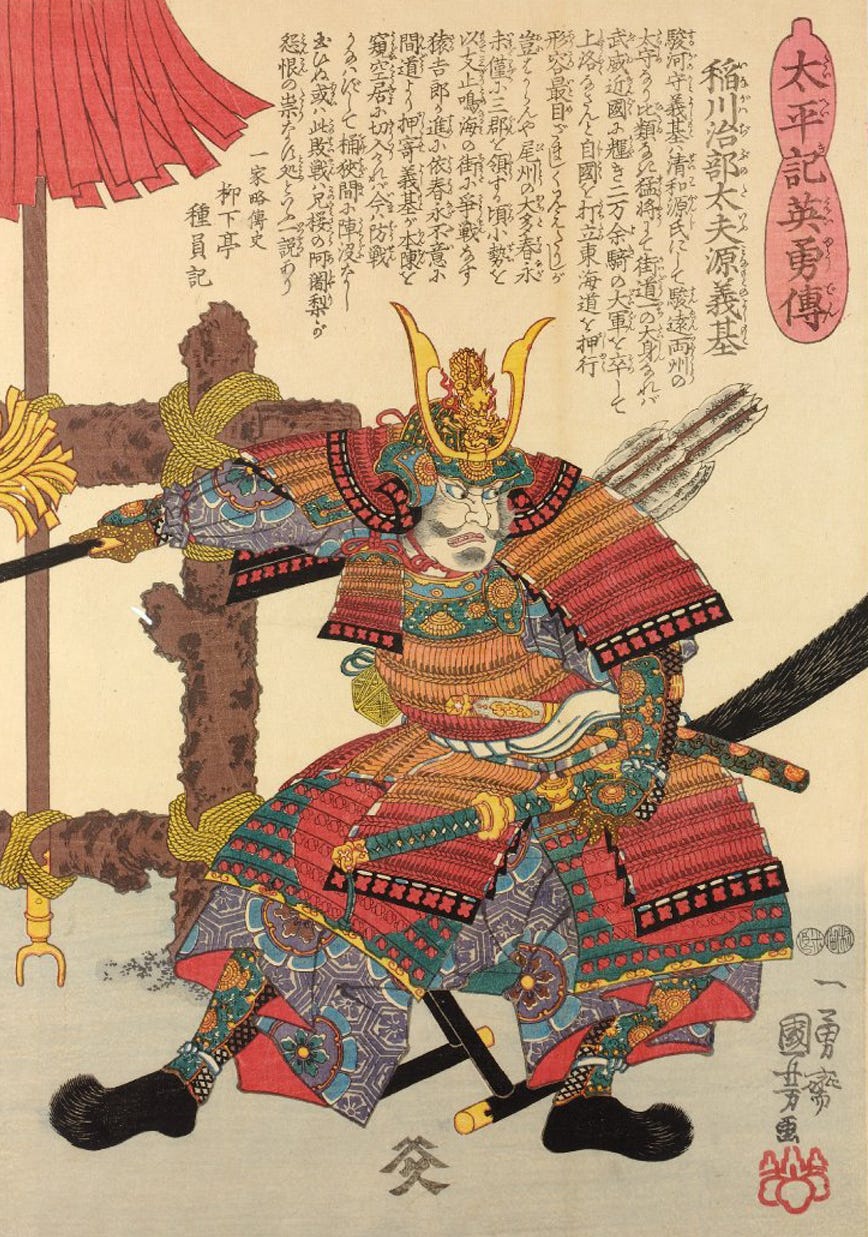
Odaka Castle had been a strategically important castle for the Oda clan, watching the local highways, and acting as a line of defense against eastern enemies the Matsudaira, and in particular, the powerful Imagawa. To counter this insurrection, to keep an eye on the troop movements in Odaka and block supplies to the important castle, Nobunaga had ordered the construction of the two fortresses, Marune and Washizu, just 800m east and north east of Odaka.
That evening Nobunaga gathered his vassals in Kiyosu Castle and spent the time in idle chatter. His men were shocked that Nobunaga was seemingly oblivious to the danger that now faced them. Some had already started to prepare for a siege, expecting the Imagawa to arrive later the following day and surround Kiyosu. At around midnight, he told them all to go home, and Nobunaga himself went to bed.
At just before daybreak, Nobunaga was awakened by his staff. Washizu and Marune were under attack.
Nobunaga quickly rose, ordered his armour be prepared and the horagai conch shell horns be sounded to signify battle. Once dressed for battle, he performed a short excerpt from the Noh play, Atsumori, in particular the verse that pertains to life being short. While standing he quickly he ate a bowl of ochazuke, rice with green tea poured over it, and saddling his horse departed with just five mounted guards bound for the Great Atsuta Shrine, around 12 kilometers away..
Around 2,500 samurai awaited him on his arrival at Atsuta Shrine, including a large contingent under the sacred shrine’s Chief Carpenter, Okabe Mataemon. Nobunaga entered the shrine complex and prayed for victory. Throwing five coins as an offertory to the gods of Atsuta, he and his men were surprised and encouraged by what happened next. All five coins are said to have landed same face up. This was seen as most auspicious. Particularly as Nobunaga could only raise 2,500 troops and was about to face a much larger foe.
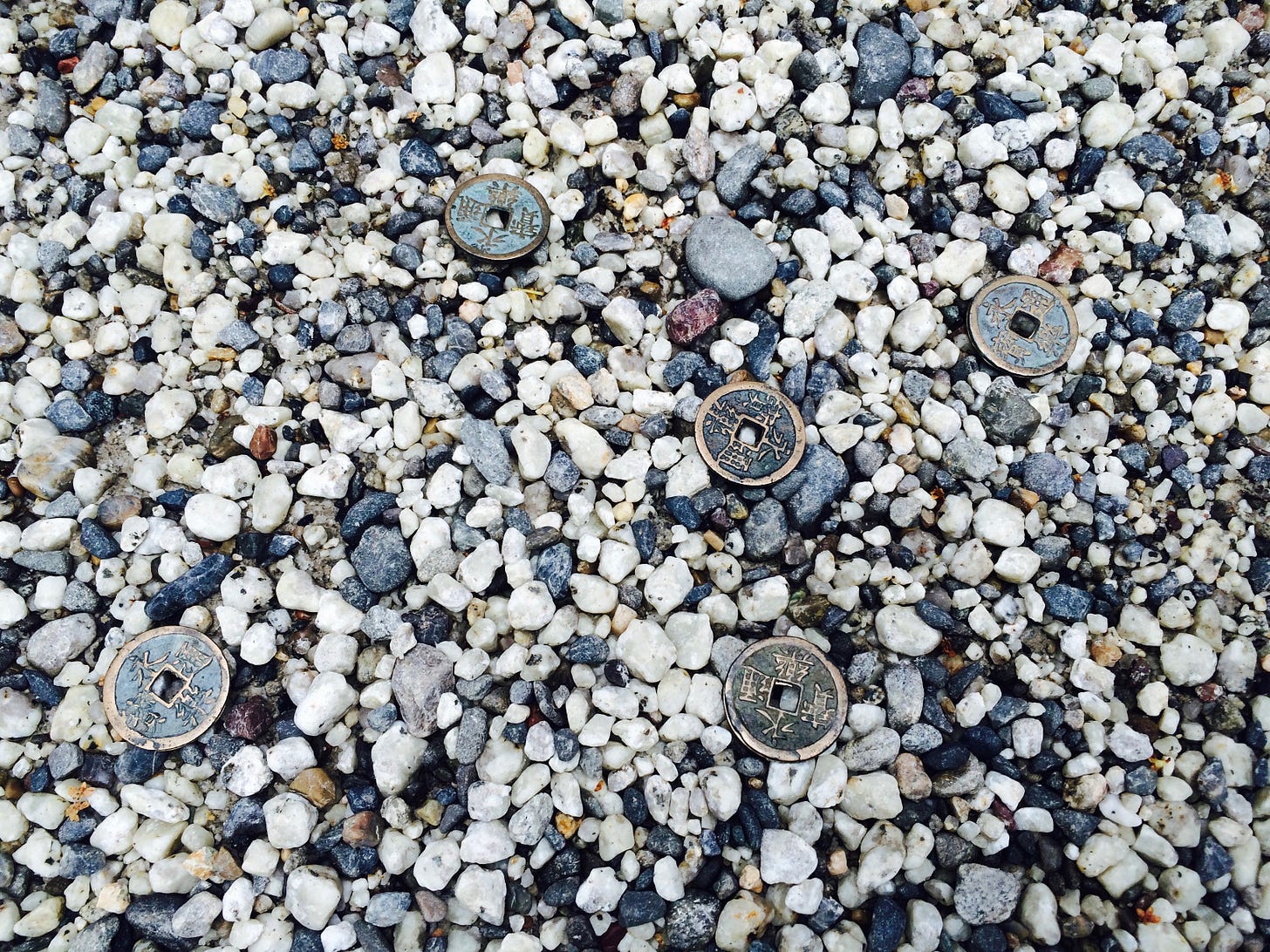
From Atsuta, Nobunaga and his men could see the smoke from the burning fortresses rising into the hazy sky. He led them towards the Zensho-ji, an abandoned hilltop temple overlooking the Imagawa forces’ camp site. Nobunaga ordered his men to set up war flags and banners around the Zensho-ji to make it look as though there was a much larger army in residence. To their advantage, the large numbers of Imagawa troops were not in the immediate vicinity of their liege lord. The area is particularly hilly, with many valleys between the ridges. The Imagawa army, I believe, was spread out, hidden away in these many valleys, out of sight of their master. The smaller number of Oda troops, familiar with their home territory, managed to work their way around the vacant hills and valleys unseen, and secreted themselves into position in an area known as Kamagatani on the other side of Imagawa Yoshimoto’s camp. According to legend, using a thunderstorm to mask their movements, they poured into the small valley and struck hard at the heart of the Imagawa camp.
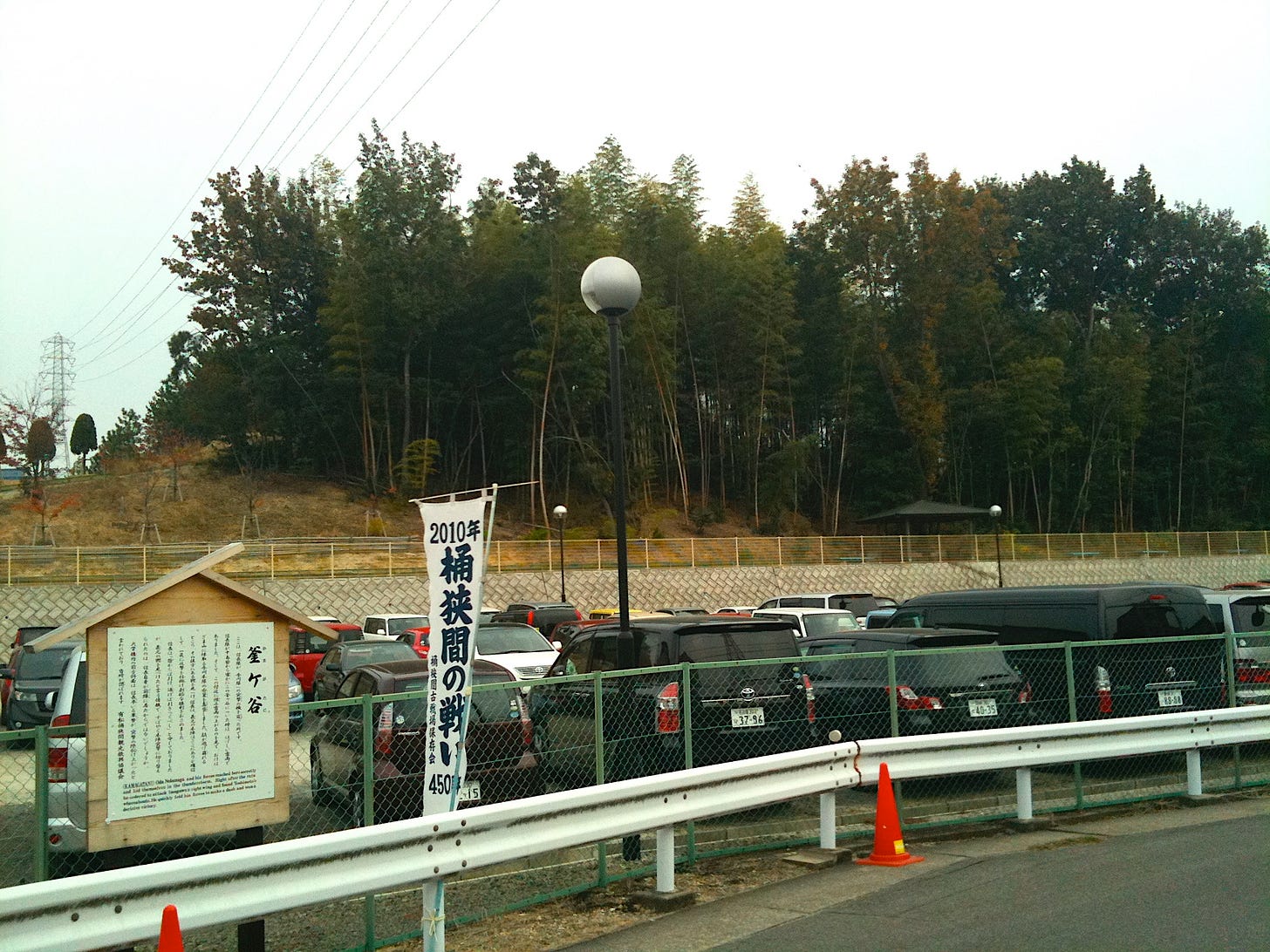
Nobunaga had addressed his men before going into battle, telling them not to fear a larger opponent and that, “The enemy are exhausted, they’ve been fighting all night taking Washizu and Marune, and are low on provisions, but you are fresh. We can crush them. Don’t stop for trophy heads, kill and keep moving!”
June 12, 1560 was a hot, humid day, said to have been interspersed with showers and thunderstorms. During such a rainstorm is when Nobunaga made his move. The Imagawa forces were celebrating their victories that morning over the smaller Oda held castles and their uncontested advance to the Okehazama area with sake and food.
Imagawa Yoshimoto was in his tent-like war camp enclosure when he heard the first of the fighting. Thinking it was a drunken brawl amongst his closest men, he left his tent to investigate, and was surprised to see Oda troops bearing down on him. In panic, Imagawa Yoshimoto ran, getting about 100 meters from his command post before being confronted by a spear wielding Oda samurai named Hattori Koheita. With his tachi sword, Imagawa cut through the man’s kneecaps, dropping him to the ground. Yoshimoto was then tackled by a second Oda samurai, Mori Shinsuke, who promptly toppled him to the dirt and pinning him down, took his head with a short sword. Imagawa Yoshimoto was just 41 years old. The battle raged for a short while afterwards, but with their leader having been dispatched early, and all bar two of the senior officers killed, the remaining officers and men surrendered, and fled or joined the Oda faction. It was all over within less than two hours.
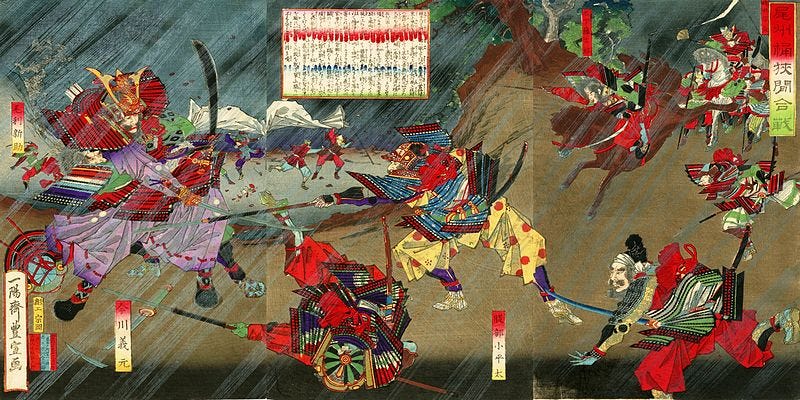
Before daybreak on the morning of the 12th, Imagawa Yoshimoto had dispatched a 18-year-old samurai — his prized hostage, traded with the Matsudaira clan of Mikawa (eastern Aichi Prefecture) to ensure peace and cooperation between the Imagawa and Matsudaira, Matsudaira Motoyasu, the future Tokugawa Ieyasu — to destroy the fortresses and deliver desperately needed supplies to Odaka. The young samurai — dressed in splendid red armor— and his men then used the relatively new weapon, matchlock guns, introduced in 1543, the year of the young warriors birth, to maintain a barrage of gunfire, first bringing down Washizu, then with the shooting death of it’s commander, Marune. The future shogun was delivering much needed supplies to Odaka Castle when Oda Nobunaga and his troops attacked the Imagawa command post. Being absent from the main Imagawa headquarters most probably saved Ieyasu’s life.
With Imagawa Yoshimoto killed, Ieyasu, until now long a hostage of the Imagawa, took the opportunity to flee back to his ancestral lands at Okazaki, pursued by Oda troops. Ieyasu first went to his clan temple, the Daiju-ji, and before the graves of his ancestors was about to commit seppuku but was prevented from doing so by the head priest. Instead on the priests suggestion he commenced unifying the Mikawa lands, and within a year and a half was in talks with Oda Nobunaga forming an alliance.
The site of the Battle of Okehazama is now a park, with a fine statue of Oda Nobunaga and Imagawa Yoshimoto near where Imagawa is believed to have fallen. Much of the area has since been overtaken by private housing and a local supermarket shopping center. The route taken by the Oda attack force is well sign-posted in Japanese and English and can be easily followed providing a better understanding and appreciation of the battle. Other signposts also point out related historical spots to visit, including the remaining few of seven headmounds, where enemy heads were mass buried, the nearby Chofukuji Temple, where many more heads were interred, the Pine Tree of Military Planning, and the area where the battle was launched and fought.
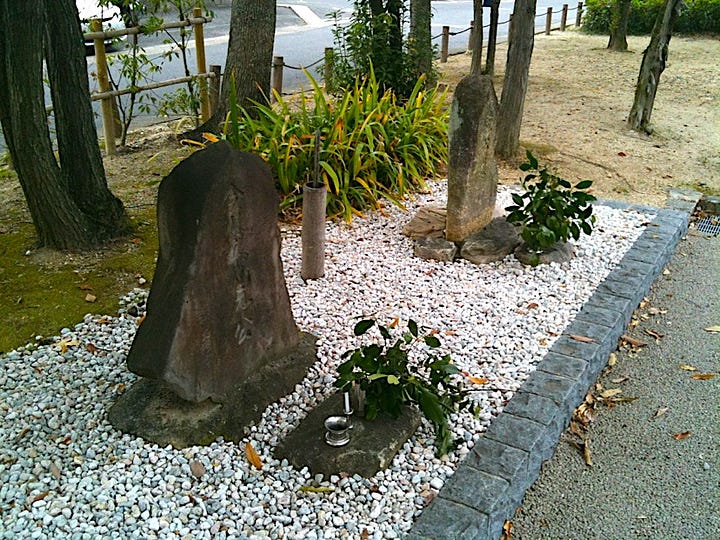

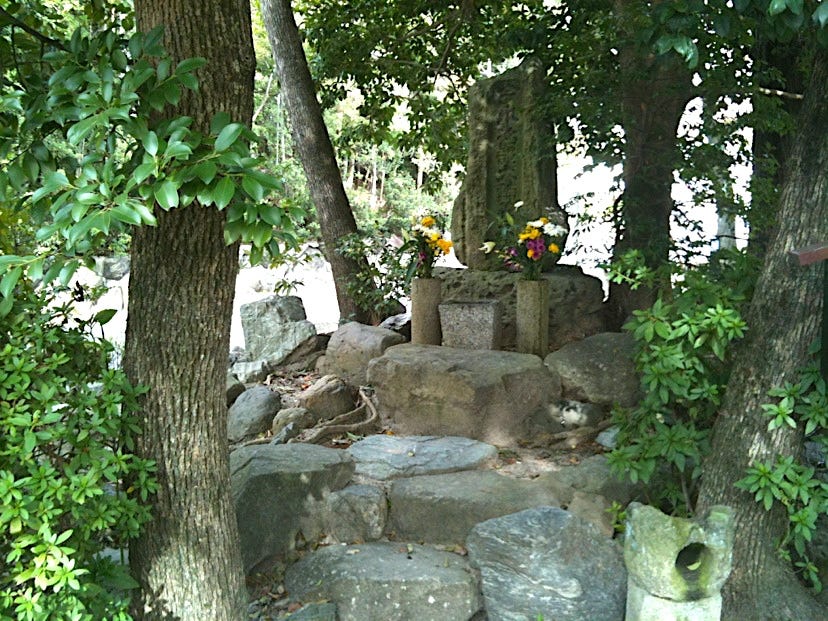
The Battle of Okehazama was one of Oda Nobunaga’s finest victories, trouncing a fierce adversary at odds of around ten to one! It was also one of the most important turning points in Japanese history. The battle signified the end of the powerful Imagawa clan, while Nobunaga took the first steps towards becoming the first of the Japan’s unifiers, ruling a third of the nation before being assassinated in 1582. It also allowed the freedom of the man who would eventually eclipse even Nobunaga, becoming the third unifier, and the shogun, Tokugawa Ieyasu!

